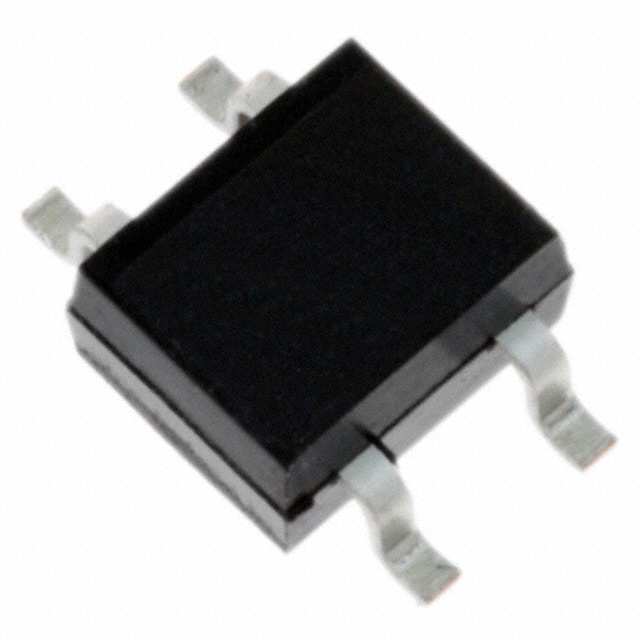B10S-G Product Overview
Introduction
B10S-G is a versatile electronic component that belongs to the category of semiconductor devices. This product is widely used in various electronic applications due to its unique characteristics and functional features.
Basic Information Overview
- Category: Semiconductor Device
- Use: Signal Amplification, Switching
- Characteristics: High Gain, Low Noise, Small Size
- Package: TO-92
- Essence: Silicon NPN Transistor
- Packaging/Quantity: Typically available in reels or tubes containing multiple units
Specifications
- Maximum Collector-Base Voltage (Vcb): 40V
- Maximum Collector Current (Ic): 200mA
- DC Current Gain (hFE): 100 - 600
- Power Dissipation (Pd): 625mW
- Operating Temperature Range: -55°C to +150°C
Detailed Pin Configuration
The B10S-G transistor has three pins: 1. Collector (C): Connected to the positive supply voltage in typical configurations. 2. Base (B): Input terminal for controlling the transistor's conductivity. 3. Emitter (E): Output terminal through which the amplified signal is obtained.
Functional Features
- High Gain: Provides significant amplification of input signals.
- Low Noise: Minimizes unwanted interference in signal processing.
- Small Size: Enables compact circuit designs and space-efficient applications.
Advantages and Disadvantages
Advantages
- Reliable signal amplification
- Low power consumption
- Wide operating temperature range
Disadvantages
- Limited maximum collector current
- Sensitivity to static electricity
Working Principles
The B10S-G operates based on the principles of bipolar junction transistors, utilizing the control of current flow between its terminals to amplify or switch electronic signals.
Detailed Application Field Plans
The B10S-G transistor finds extensive use in the following applications: - Audio Amplifiers - Switching Circuits - Sensor Interfaces - Oscillator Circuits
Detailed and Complete Alternative Models
Some alternative models to B10S-G include: - BC547 - 2N2222 - 2N3904 - S8050
In conclusion, the B10S-G semiconductor device offers reliable signal amplification and switching capabilities, making it an essential component in various electronic circuits and systems.
[Word Count: 324]
10个与B10S-G在技术解决方案中的应用相关的常见问题及解答
What is B10S-G?
- B10S-G is a high-strength, low-alloy steel with excellent weldability and formability, commonly used in structural and mechanical applications.
What are the typical applications of B10S-G?
- B10S-G is often used in construction, automotive components, heavy equipment manufacturing, and industrial machinery due to its strength and formability.
What are the welding considerations for B10S-G?
- Welding B10S-G requires preheating and post-weld heat treatment to avoid cracking, and it is recommended to use low-hydrogen welding electrodes or processes.
How does B10S-G compare to other steel grades?
- B10S-G offers higher strength and better formability compared to many standard carbon steels, making it suitable for demanding applications.
What are the corrosion resistance properties of B10S-G?
- B10S-G has moderate corrosion resistance, but additional protective coatings or treatments may be necessary for applications in corrosive environments.
Can B10S-G be machined easily?
- B10S-G can be machined using standard methods, but its high strength may require appropriate cutting tools and machining parameters.
Is B10S-G suitable for cold forming operations?
- Yes, B10S-G is well-suited for cold forming processes such as bending, rolling, and stamping due to its good formability.
What are the temperature limitations for B10S-G?
- B10S-G is suitable for use in temperatures ranging from -50°C to 200°C (-58°F to 392°F) without significant loss of mechanical properties.
Are there any specific design considerations when using B10S-G in technical solutions?
- Designers should consider the material's high strength and formability, as well as the need for proper welding procedures and potential corrosion protection measures.
What standards or specifications apply to B10S-G?
- B10S-G is typically produced to meet ASTM, EN, or JIS standards, and specific grades may have additional industry or company-specific specifications.


